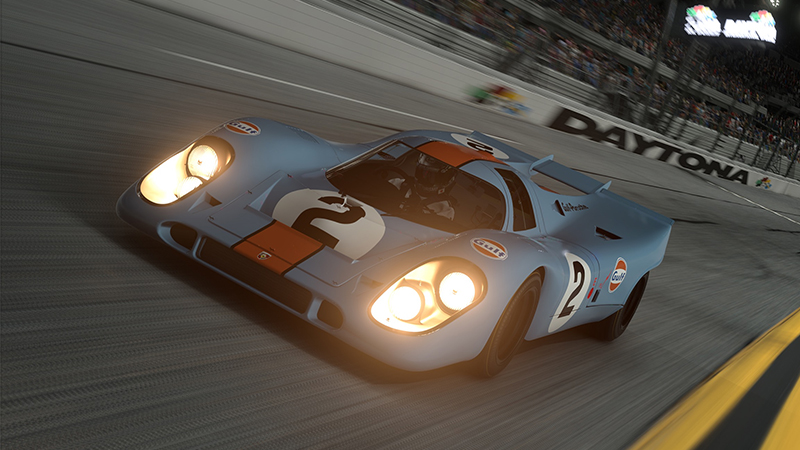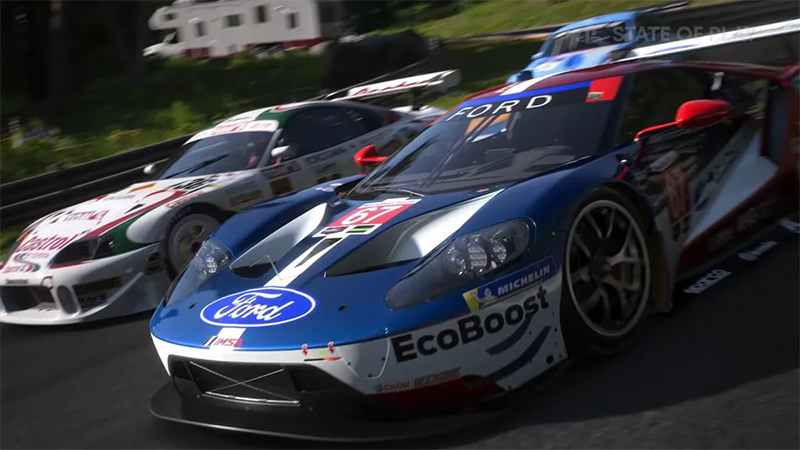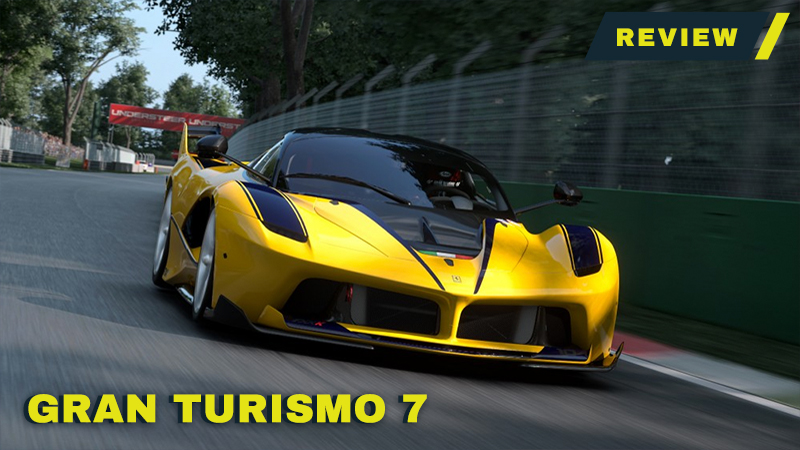Gran Turismo 7 opens with an unskippable eight-minute video that features the Titanic sinking and other historical events before transitioning to an extended montage of vehicles inside the game. In an increasingly focus-tested market, no other racing game has the gall to pull off such a strange opening. However, it’s that essence of developer Polyphony Digital being true to itself that has helped the series stay great for 25 years and why its seventh main entry is something incredibly special.
Beyond its eccentricities, GT7 has one major edge on most of its competition: the feel of the actual driving. And this game goes beyond the franchise’s typically tight controls by using the PlayStation 5’s controller to its benefit. This genre has already had some great DualSense implementation with Dirt 5 standing out at launch, but Polyphony Digital has taken it a step forward. Rather than simply focusing on the bigger vibrations found in collisions and jumps, it’s the smaller elements that make it more realistic as the details bleed through the controller and into your hands. Feeling the slight bumps on roads, the gear shift changing, and instantly knowing when you’re going off the track due to the change in how the ground feels is remarkable. The DualSense has been one of the most underutilized aspects of the PlayStation 5, but it truly shines here and demonstrates what a game changer it can be.

With multiple gameplay modes, over 400 cars, and around 30 tracks (with many of them having multiple layouts), it would be very simple for players to be overwhelmed with the amount of content in Gran Turismo 7. However, all of the modes are slowly introduced by fulfilling missions at a café that teaches players about cars as they collect different types from winning races. This is a brilliant decision as it paces the game well and the strong onboarding gets players familiar with the gameplay before they dive into larger tracks and multi-race events.
The Missions mode and Brand Central mode are the highlights of the bunch. The former has players mastering different parts of tracks and learning driving skills in an enjoyable manner rather than through dull tutorials and the latter houses an in-game museum that offers an in-depth look at the various car manufacturers and their history. From learning that Suzuki began as a looms business to just seeing the evolution of car designs over the past 100 years, it’s a wonderful returning resource.
In addition to the masterfully recreated real-life tracks, GT7 also sees the return of some iconic original circuits from past installments, such as Deep Forest and Trial Mountain, which are nice touches for an anniversary title. While GT Sport was light on content at launch and seemingly had no direction, it’s clear that Polyphony learned from its shortcomings as the series’ PS5 debut is filled with every option that fans could want. It’s clear that this is a passion project for the developers and that love of cars truly shines through in every aspect.

Gran Turismo isn’t about simply driving the fastest and most amazing cars available in the marketplace. Purchasing a supercar is a real thrill in and of itself, as it should be considering how much work goes into earning the credits that they cost, but that’s only part of the allure. Instead of that being the only focus, like in so many other racing games, Polyphony Digital has made GT7 a true celebration of cars. Optimizing a basic car you bought for 30,000 credits and seeing it outrace more expensive vehicles is just as joyous as driving a Lamborghini V12 VGT. Well, a Lambo does go “vroom” in a much more satisfying manner, but it’s still a blast and that huge range separates it from the competition.
The series has always been about more than racing; it’s about celebrating every aspect of car ownership and that is on full display here. From checking the miles on a vehicle at the used car dealership to hoping that the rare car you want isn’t sold out in the in-game shop, there’s an excitement in finding a good deal and discovering a car that feels like it is yours. This bleeds into the extensive tuning and customization that is used to improve each vehicle’s performance and you can even do some goofy stuff like taking your already shiny car to a car wash for 50 credits. Very few racing games will try to make players relive washing a car or changing its oil, but it sure is a very on-brand thing for Polyphony to do.
The stacks of menus are sometimes awkward to navigate through and the racing line still isn’t dynamic like many of its contemporaries, but the strength of GT7‘s foundation makes it easier to brush off such inconveniences. When paired with what a joy it is to get better at learning the tracks, it’s not difficult to return to races with enthusiasm after wrecking late in a race and losing due to a lack of rewind. Polyphony’s vision is clear, and definitively its own, which makes even its shortcomings part of the charm as it simply isn’t like its competitors and isn’t trying to be.
Gran Turismo 7 is a refreshingly authored game in a sea of titles that tend to throw a wealth of content at the player. Non-event-related car unlocks take time and players will get familiar with their vehicles before adding to their collection in a meaningful way. It takes hours before all the modes are opened up and players are ultimately given time to properly digest everything Polyphony Digital’s racer has to offer. While this approach could’ve easily backfired in a lesser game, it allows racers to fully appreciate what is here thanks to its stellar gameplay.
SCORE: 9/10
As ComingSoon’s review policy explains, a score of 9 equates to “Excellent.” Entertainment that reaches this level is at the top of its type. The gold standard that every creator aims to reach.










